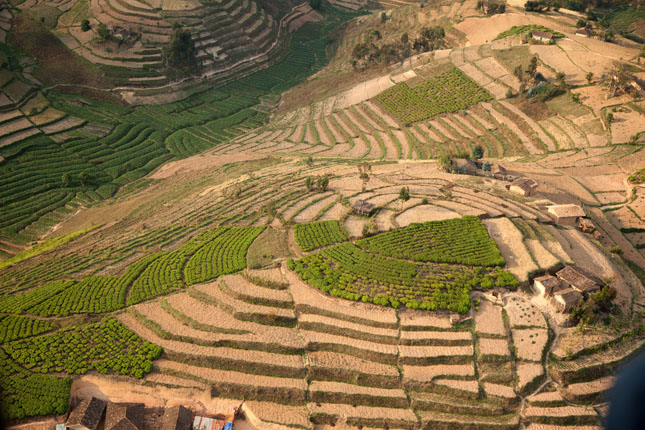-
A World of Extremes: New Thinking Needed to Reconcile Food-Water Choke Points
July 27, 2015 By Anders Jägerskog
Food and water are tied to one another fundamentally. But in addition to their biophysical relationship, human systems intervene, whether through pricing schemes and trade agreements or shifting patterns in consumption and taste.
A recently released report commissioned by the Swedish FAO Committee, which supports the work of the UN Food and Agriculture Organization, provides a fresh look at where we stand in regard to this important global balancing act. Jan Lundqvist, Jenny Grönwall, and myself take stock of changes in water supply due to climate change (increased variability), its effects on the global capacity to grow enough food to sustain a growing global population (significant), and efforts to link the global water resources situation with increasing scarcity (too-often failed).
Too Little or Too Much
Water resources are scarce in relation to booming demand. Demographic change (2 billion people are expected to be added to world population by 2050) and shifts in food habits (meat-heavy diets are becoming more popular as a global middle class emerges) mean food production must increase rapidly in the near future.
Meanwhile, availability of water varies significantly from place to place. Climate change is disrupting rainfall patterns and causing prolonged periods of extremes. Droughts that last for years, such as the current one in California, represent a “new normal.”
800 million people are undernourished while 2 billion are overweightTogether these conditions represent a radically new context for food and water security. Many governance systems are based on an older model of inputs and outputs and are promoting poor management of water resources and food production under today’s conditions. Misguided incentives encouraging wasteful use of water are one example (e.g., heavy subsidies of irrigation water). As a result, the widely endorsed human right to household water, sanitation, and food has yet to be fulfilled. There are still far too many people that go to bed hungry each day.
It is not only a question of achieving adequate food supply but also nutritional quality. Global food supply has increased by around 30 percent in recent decades, but much of it has not reached those who need it most. Indeed, more and more people eat far too much and exercise too little leading to obesity. While this is a major global health challenge it is also a food, water, and energy challenge. The food that we do not need but still consume puts an unnecessary burden on the environment and represents a misallocation of resources as others starve. About 800 million people are undernourished globally while 2 billion are overweight or obese.
Similarly, between one third and one half of the food produced around the world is lost due to spoilage during transport or storage, lack of access to markets, or waste by consumers. Rivers of water are literally exploited in vain. When the rivers are actually desiccated and the rains fail, people turn to groundwater, which is often several hundred meters deep in affluent as well as low-income countries – and dropping.
Toward Better Efficiency and Equity
Consequences of food and water trends are wide. After outlining the major challenges, the report highlights some ways forward. The report calls for more effective governance of water as part of food production, including decreasing losses in the food supply chain. Investment is needed in transportation, storage, market access, and trade so as to improve the flow of both food and water between places, both nationally and internationally. Administrative, economic, and physical barriers need to be removed to promote trade and efficiency but also allow for the adoption of key inputs for food production in poorer regions.
In addition, food waste and the role of consumers is highlighted. Adopting healthier and less water intensive diets (less focus on meat and more on vegetables) can make a major difference while also reducing obesity. Consumers can also make a stronger effort not to throw away edible food. In this regard it is important for governments to commit themselves to a significant decrease in food waste. Resolutions such as the one passed by the European Parliament in January 2012 to halve the food waste within the European Union by 2025 need to be followed up by concrete national commitments to achieve them.
There is much to do, but moving ahead on even a few of these issues will make a difference in the challenge ahead. Unless we start to address the food-water nexus, feeding the world will become increasingly difficult. With a growing population and increasing climatic variability leading to disruptions in water availability – and therefore food production – action is urgently needed.
Anders Jägerskog is counselor for regional water issues in the Middle East and North Africa for the Embassy of Sweden in Amman, Jordan. The views expressed by Jägerskog do not necessarily reflect the views of the Swedish International Development Co-operation Agency or the Swedish Government.
Sources: International Food Policy Research Institute, Swedish FAO Committee, UN Food and Agriculture Organization, United Nations.
Photo Credit: Terraced farming in Rwanda, courtesy of A’Melody Lee/World Bank.
 A Publication of the Stimson Center.
A Publication of the Stimson Center.



